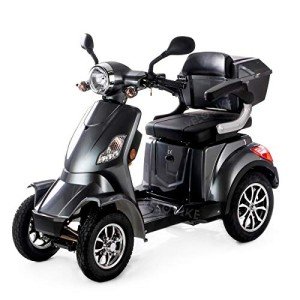Mobility Scooters in the UK: A Comprehensive Guide
In the United Kingdom, mobility scooters are ending up being a progressively popular methods of transportation for people with mobility problems, supplying them with the flexibility to navigate their neighborhoods independently. These motorized lorries are created to assist those who have difficulty walking or utilizing a manual wheelchair, providing a useful and comfy option for everyday travel. This short article looks into the world of mobility scooters in the UK, exploring their advantages, legal requirements, and how to choose the ideal one.
Introduction to Mobility Scooters
A mobility scooter is a battery-powered automobile that normally has 3 or 4 wheels, a seat for the driver, and handlebars for guiding. They are designed to be easy to use and maintain, making them ideal for older grownups and people with impairments who desire to maintain their independence. Mobility scooters come in various sizes and designs, each catering to various needs and choices.
Advantages of Mobility Scooters
- Increased Independence: Mobility scooters enable users to take a trip longer distances without the physical stress connected with strolling or utilizing a manual wheelchair. This independence can substantially enhance their lifestyle.
- Cost-Effective: Compared to other motorized vehicles, mobility scooters are relatively budget friendly. They also require minimal maintenance, which can save users a great deal of money in the long run.
- Ease of Use: Most mobility scooters are developed to be easy to use, with intuitive controls and comfy seating. They are often lightweight and can be easily dismantled for transportation.
- Enhanced Social Interaction: By enabling users to venture out more regularly, mobility scooters can help in reducing sensations of isolation and loneliness, fostering social connections and community participation.
- Improved Safety: Mobility scooters are geared up with functions such as headlights, brake lights, and horns, making them safer for use on roadways and in public spaces.
Types of Mobility Scooters
When picking a mobility scooter, it's crucial to consider the type that best suits your requirements. Here are the primary types readily available in the UK:
Class 2 Mobility Scooters:
- Speed: Limited to 4 miles per hour (6.4 km/h)
- Usage: Suitable for pavements and pedestrian locations
- Features: Compact and lightweight, foldable for simple transport
Class 3 Mobility Scooters:
- Speed: Can rise to 8 mph (12.9 km/h)
- Usage: Suitable for both pavements and roadways, offered they are signed up and insured
- Functions: Sturdier construct, often with more innovative functions like suspension and bigger batteries
Strong Mobility Scooters:
- Capacity: Designed to support users weighing approximately 400 pounds (181 kg)
- Usage: Ideal for those who need a robust and durable scooter
- Functions: Reinforced frame, wider seat, and improved stability
Off-Road Mobility Scooters:
- Terrain: Built to deal with rough and uneven surface areas
- Use: Suitable for users who take pleasure in outdoor activities like treking or fishing
- Functions: All-terrain tires, high ground clearance, and powerful motors
Legal Requirements for Mobility Scooters in the UK
Utilizing a mobility scooter in the UK features particular legal responsibilities. Here are the bottom lines to consider:

- Registration and Insurance:
- Class 2 Scooters: No registration or insurance needed
- Class 3 Scooters: Must be signed up with the DVLA, insured, and display a legitimate MOT certificate if utilized on roads
- Driver Requirements:
- Age: Users must be at least 14 years of ages
- Health: No particular health conditions are required, however users should have the ability to control the scooter securely
- Speed Limits:
- Class 2 Scooters: 4 miles per hour (6.4 km/h) on pavements
- Class 3 Scooters: 8 mph (12.9 km/h) on roads, 4 mph on pavements
- Safety Equipment:
- Lights: All terrain Mobility scooters scooters used on roads must have front and rear lights, indicators, and a horn
- Reflectors: Required for usage on roads, particularly throughout low visibility conditions
- Tax and Parking:
- Tax: Class 3 scooters are exempt from vehicle tax
- Parking: Users can park in designated disabled parking spaces with a legitimate Blue Badge
How to Choose the Right Mobility Scooter
Picking the ideal mobility scooter involves considering several aspects:
Mobility Needs:
- Range: How far do you require to take a trip?
- Surface: Will you be using the scooter on pavements, roadways, or off-road?
- Weight Capacity: What is the maximum weight the scooter requires to support?
Budget plan:
- Initial Cost: Mobility scooters can vary from a couple of hundred to a number of thousand pounds
- Ongoing Costs: Consider the cost of batteries, maintenance, and insurance coverage
Functions:
- Comfort: Look for a scooter with a comfortable seat and adjustable controls
- Storage: Some scooters provide additional storage for shopping bags or individual items
- Portability: If you require to transport the scooter, select a model that is light-weight and foldable
Reputation and Support:
- Brand: Research trustworthy brands known for their quality and reliability
- Guarantee: Check the warranty duration and what it covers
- Consumer Support: Ensure the producer or merchant provides excellent customer assistance and service
Frequently Asked Questions About Mobility Scooters in the UK
Do I require a license to drive a mobility scooter?
- No, you do not need a driving license to operate a mobility scooter in the UK. Nevertheless, Class 3 scooters must be signed up with the DVLA and guaranteed if utilized on roads.
Can I use a mobility scooter on the pavement?
- Yes, both Class 2 and Class 3 scooters are allowed on pavements, however Class 3 scooters are limited to 4 mph.
Exist any restrictions on where I can utilize a mobility scooter?
- Class 2 scooters are limited to pavements and pedestrian areas. Class 3 scooters can be used on roadways, however they must fulfill particular legal requirements.
How do I keep my mobility scooter?
- Regular maintenance consists of examining battery levels, tire pressure, and brake functionality. It's likewise important to clean the scooter routinely and keep it in a dry location.
Can I get a mobility scooter through the NHS?
- The NHS provides mobility scooters through the Disabled Living Allowance (DLA) or Personal Independence Payment (PIP). You can likewise acquire or rent a scooter from a personal merchant.
Is a mobility scooter tax-deductible?
- In many cases, the expense of a mobility scooter can be claimed as a medical expense. Consult a financial consultant for specific guidance.
Tips for Using a Mobility Scooter Safely
- Use Appropriate Clothing:
- Wear comfy and weather-appropriate clothes. Consider using a high-visibility jacket when using the scooter on roads.
- Maintain the Scooter:
- Regularly check the battery, tires, and brakes to ensure the scooter is in good working condition.
- Follow Traffic Rules:
- Obey traffic indications and signals, and use designated pedestrian and cycle paths when possible.
- Usage Safety Equipment:
- Always utilize the headlights, brake lights, and horn, especially during low exposure conditions.
- Be Mindful of Others:
- Be considerate to pedestrians and other road users. Decrease when approaching crowded areas.
Mobility scooters are an important tool for people in the UK who face mobility obstacles. They offer a variety of benefits, from increased independence to enhanced security, making them a popular option for older grownups and individuals with specials needs. By comprehending the different types of scooters, legal requirements, and how to select the best one, users can enjoy the flexibility and convenience these vehicles provide. Whether for everyday errands or leisure activities, a mobility scooter can significantly enhance the quality of life for many individuals.
Extra Resources
- DVLA Website: For details on registering and guaranteeing a Class 3 mobility scooter
- Age UK: Offers recommendations and support for older adults thinking about a mobility scooter
- Disability Rights UK: Provides assistance on accessing mobility scooters through financial support programs
By putting in the time to research study and pick the best mobility scooter, users can delight in higher self-reliance and a more active way of life.







